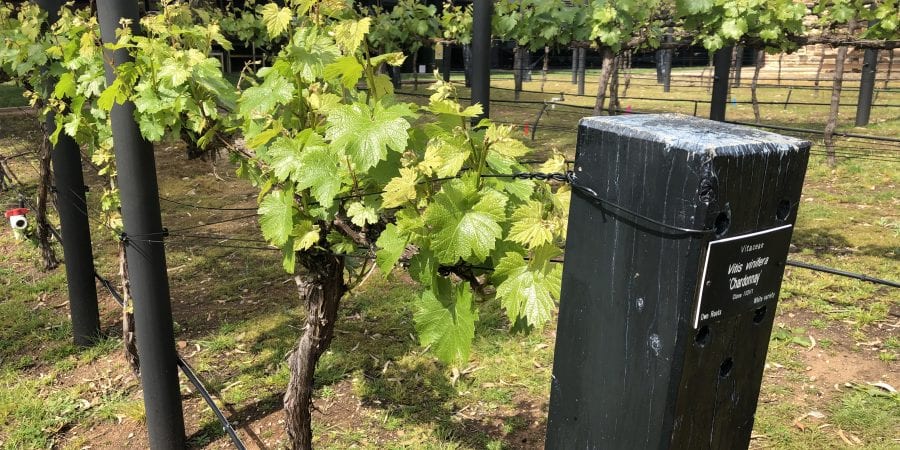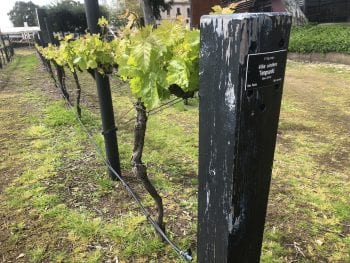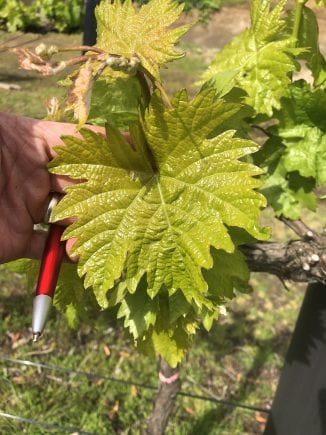Welcome to Week-2-of-the-school-holidays-with-a-sick-kid -(still)-and-(now)-sick-me-easy-way-out blog post!
While I was hunting around the blog archives for last week’s cheat post, I came across this one. At the time (and even now), I found it fascinating (if I do say so myself)!
Let’s dive in (and hope you find it fascinating too!)…
All across Australia, the first buds of the season are bursting. Some varieties are even working on leaves and bunches already.
Obviously, the growth stage at which each variety is currently, depends heavily on location – climate, soil type, and viticultural management, to name a few. Unless one vineyard is growing a heap of different varieties in close proximity it is almost impossible to compare growth stages across varieties.
Luckily for you, I happen to know of a little block down in the Adelaide Plains which is growing twelve different varieties in the one spot! Amazingly they also make it into wine, but that’s a story for another day.
So, what this means is that I will be able to show you first hand how each of these varieties develops throughout the growing season. With (essentially) all other variables controlled for. I will also try to compare them to how one of the same varieties is doing in the Adelaide Hills. You should be able to observe a clear difference in development.
NOTE: Keep in mind, this was all written back in 2019, so if you’d like to revisit some of those blogs where I compare varieties throughout the growing season, I’d suggest checking out this one, this one, and this one.
Side by side comparison…
Let’s have a look at some photos and then we’ll have a chat about the differences…
SHIRAZ
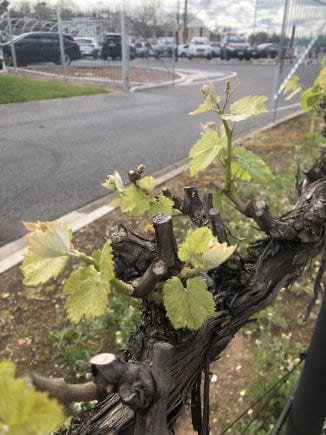
CABERNET SAUVIGNON
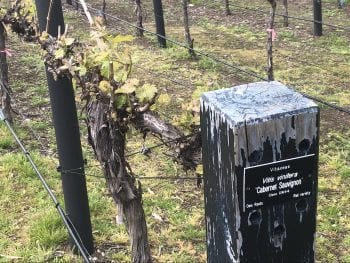
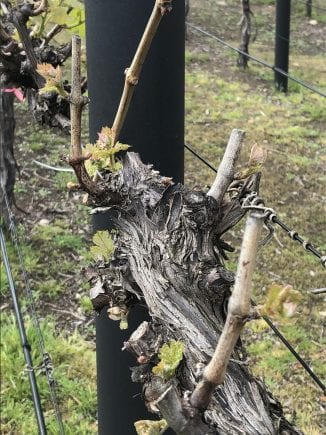
TEMPRANILLO
MERLOT
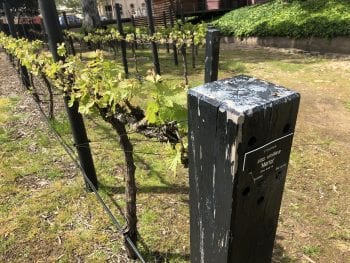
GRENACHE
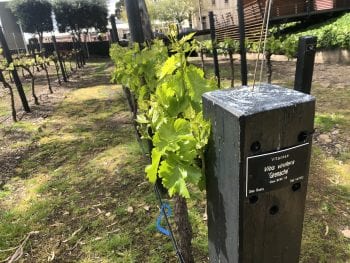
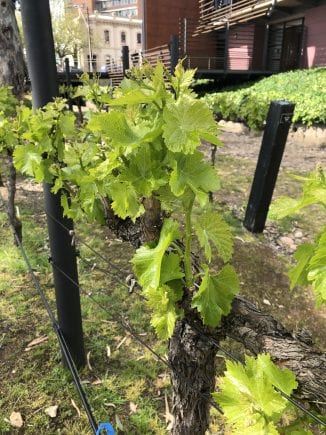
CHARDONNAY
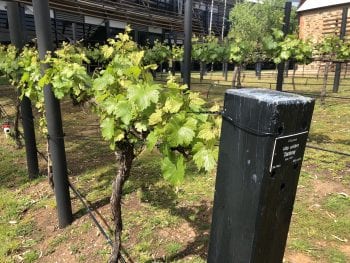
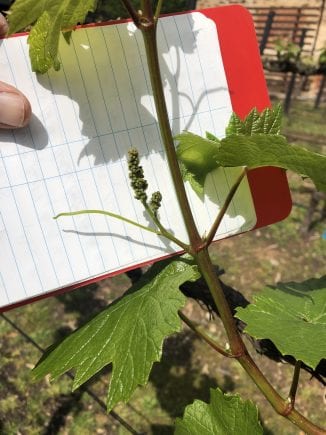
SAUVIGNON BLANC
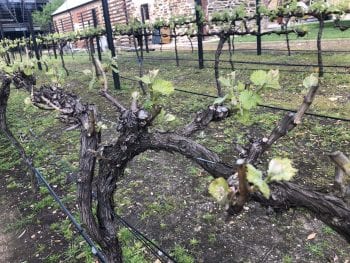
VERMENTINO
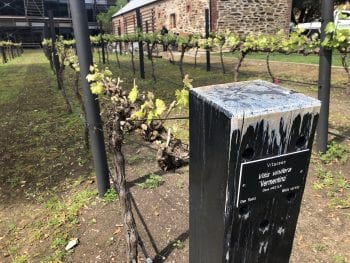
FIANO
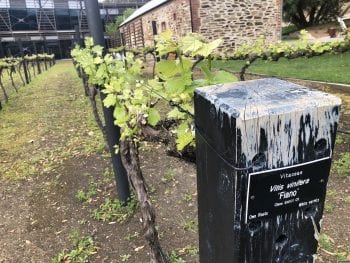
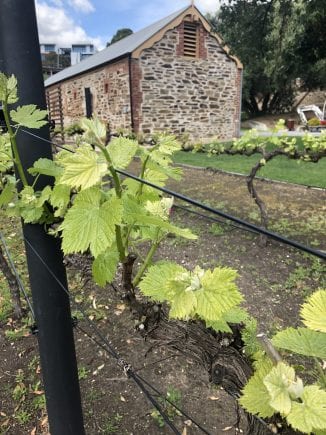
RIESLING
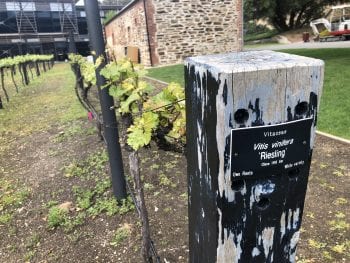
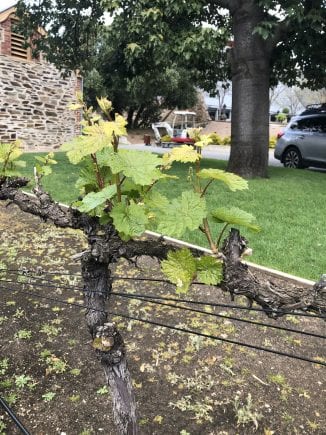
Loving our blog? Sign up for weekly updates straight to your inbox…
[withwine type=’join-mailing-list’]
The numbers…
As you can see, there are already some notable differences between varieties. Comparing the photos above, you should be able to see that shoot length, bunch development, number and size of leaves are all pretty different across the board.
However, visual inspection only tells part of the story. Take for example Tempranillo versus Chardonnay. Visually it looks like the Tempranillo is a lot further advanced than the Chardonnay. In fact, they are both at approximately the same growth stage (E-L 12). It’s just that Tempranillo has MUCH larger leaves than Chardonnay. Check out the close-up photo of the Tempranillo leaf.
Let’s have a look at the numbers for the full story…
| Variety | No. of leaves | E-L stage |
| Shiraz | 3 – 4 | E-L 11 |
| Cabernet Sauvignon | 2 | E-L 9 |
| Tempranillo | 5 | E-L 12 |
| Sangiovese | 4 | E-L 11 |
| Merlot | 3 | E-L 9 |
| Grenache | 5 | E-L 12 |
| Chardonnay | 5 | E-L 12 |
| Semillon | 3 | E-L 9 |
| Sauvignon Blanc | 2 | E-L 9 |
| Vermentino | 3 | E-L 9 |
| Fiano | 4 | E-L 11 |
| Riesling | 4 | E-L 11 |
So, perhaps not as massively different as it appears. But different nonetheless.
Another comparison…
Now that we’ve seen how the varieties compare, let’s have a look at one of them at a couple of different locations. We’re going to throw all those other variables back into the mix – in particular, altitude. And of course, the higher above sea level, the cooler the climate. Let’s have a look…
Adelaide Plains (42 m above sea level)
E-L 12: Five leaves separated, shoots about 10 cm long
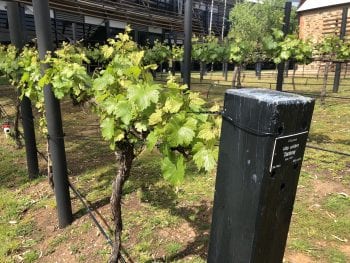
Adelaide Hills (459 m above sea level)
E-L 7: First leaf separated from shoot tip
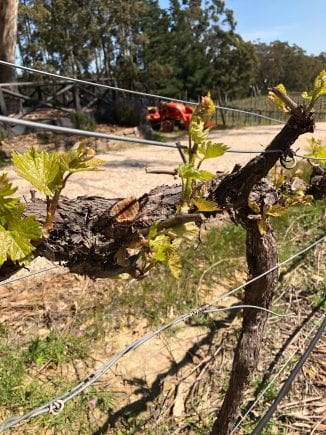
Adelaide Hills – Mount Lofty (654 m above sea level)
E-L 3: Wooly bud
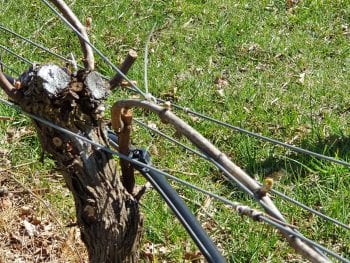
Wow! What a difference a few hundred metres makes!
See?! I told you it was fascinating!
Join me next week when I send the kid back to school and come up with some entirely new content!
